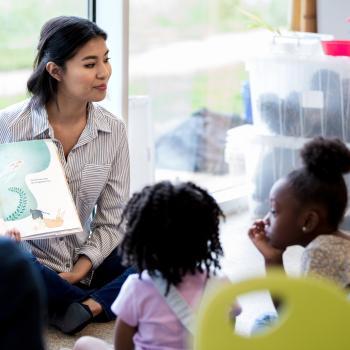Depend on the Text! How to Create Text-Dependent Questions

About this Strategy Guide
Text-dependent questions require students to return to the text to support their answers. This rereading fosters deep thinking, the ultimate goal of text-dependent questions. With this strategy guide, you learn to prepare questions that challenge students to think at deeper levels each time they do a close reading.
Research Basis
Close readings are an instructional strategy that promotes deep thinking as students reread and critically examine a text (Fisher & Frey, 2012). However, students do not automatically reread. Thus, teachers need to create and use text-dependent questions that redirect students to the text to provide evidence and support for their answers (Fisher, Frey, & Lapp, 2012). Teachers should prepare text-dependent questions in advance of the reading, considering questioning techniques such as question-answer relationships, questioning the author, and Bloom’s taxonomy to ensure deep thinking is achieved. While initial questions in a close reading may focus on the literal level, in subsequent readings questions require more advanced thinking. Across readings, questions should progress through general understanding, key details, vocabulary/text structure, author’s purpose, inferring, and forming arguments (Fisher & Frey, 2012; Fisher, Frey, & Lapp, 2012).
Strategy in Practice
Before creating text-dependent questions, select a text that's complex quantitatively (readability levels), qualitatively (how language is used or knowledge demands placed on students), or complex based on your purposes. The text chosen for close reading should be more challenging than texts students encounter during other literacy activities. Your text-dependent questions should require students to think more deeply each time they reread this text.
To create text-dependent questions, do the following:
- Determine how many days to devote to reading to ensure that questions progress from promoting general understanding to students forming and supporting opinions.
- Fisher and Frey (2012) explain that questions should progress from establishing general understanding to considering key details, vocabulary/text structure, author's purpose, inferring, and forming arguments. Through rereadings, all question levels must be addressed. Here's a sample three-day sequence:
- After the first reading, literal-level questions promote general understanding and focus on key textual details so students grasp the main idea. Examples include "Who's the main character? What information in the text lets you know this is the main idea?"
- The second reading fosters deeper thinking, focusing attention on vocabulary, text structure, and author's purpose. Questions ask students to think about the author's decisions, to consider the purpose. Examples include "How do the words influence the book's meaning? How does the story change from beginning to end?"
- On the third rereading, students answer questions requiring inferences and the formation of opinions and arguments about the text, using textual evidence for support. Examples include "What would logically happen next? What clues support your thinking? Do you agree/disagree with the author? Provide evidence for your answers."
This three-day model is a suggestion; as you become proficient in asking text-dependent questions, adjust the time based on the text and your students' needs. When planning, ensure your questions align with your text, highlighting specific aspects you want students to consider. Remember, using text-dependent questions in close readings should encourage critical thinking across additional reading experiences. As you complete close readings and students answer thought-provoking questions with textual evidence, these abilities will transfer to other literacy activities.